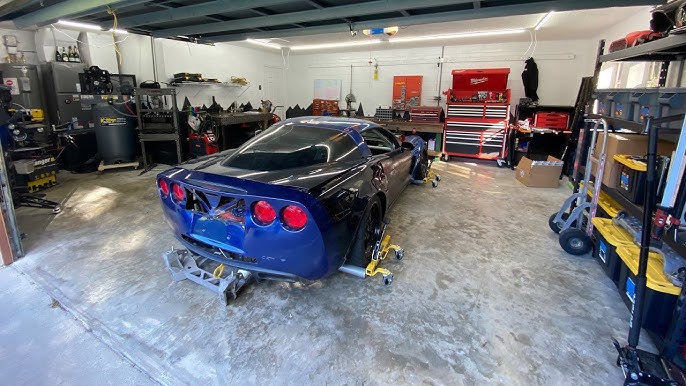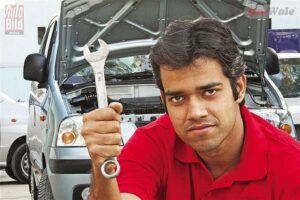Are you tired of costly trips to the mechanic? Do you dream of tackling car repairs yourself, saving both time and money? Transforming your garage into a DIY car repair workshop may be just what you need. With the right setup, tools, and knowledge, you’ll gain confidence in handling everything from basic maintenance to advanced projects. Whether you’re a seasoned gearhead or a curious beginner, this guide will walk you through each step of creating an efficient workspace for all your automotive needs. Get ready to roll up your sleeves and dive into the world of DIY car repair!
Outline for “Transform Your Garage into a DIY Car Repair Workshop: Step-by-Step Setup”
Setting up a DIY car repair workshop in your garage can be an exciting journey. You don’t need to be a professional mechanic to start; you just need the right approach and tools. Creating this space allows you to take charge of your vehicle’s maintenance and repairs.
Begin by transforming your garage into an organized, functional area that suits your needs. This involves setting up workbenches, tool storage, and adequate lighting for precision work.
Next, gather essential tools that will help you handle various tasks with ease. From wrenches to diagnostic equipment, having everything at hand makes any project smoother and more enjoyable. A well-equipped workshop opens doors to countless possibilities for car enthusiasts like you!
1. Introduction to DIY Car Repairs
DIY car repairs have gained immense popularity among auto enthusiasts and everyday drivers alike. Taking care of your vehicle not only saves money but also empowers you with valuable skills. Imagine being able to tackle those minor issues before they escalate into expensive problems.
Many people feel intimidated by the thought of working on their cars, but it’s easier than you think. With the right guidance and tools, almost anyone can learn the basics of car maintenance and repair. This hands-on approach builds confidence while enhancing your knowledge about how vehicles operate.
Moreover, DIY car repairs create a deeper connection with your vehicle. You become familiar with every part under the hood, which can lead to better overall performance and longevity for your ride.
2. Setting Up Your Garage Workshop
Creating a functional garage workshop starts with clearing out the clutter. Make room by removing any unnecessary items. A clean space allows for better organization and safety while you work on your car.
Next, consider your layout. Arrange tools and equipment in a way that maximizes efficiency. Keep frequently used items within arm’s reach, while storing seldom-used gear higher up or further back to free up valuable floor space.
Lighting is crucial too. Ensure your garage has ample illumination to spot those intricate details during repairs. Task lighting over work areas can make all the difference, allowing you to focus without straining your eyes as you dive into DIY car repair projects.
3. Essential Tools for DIY Car Repairs
To dive into DIY car repair, having the right tools is crucial. A sturdy mechanic’s tool set should be your first investment. Look for a socket and ratchet set, wrenches in various sizes, and screwdrivers that can tackle different kinds of fasteners.
Don’t overlook specialty tools either; items like torque wrenches and oil filter wrenches make specific tasks much easier. They help ensure you’re applying the correct force and accessing tough spots without frustration.
Safety gear is just as vital—gloves protect your hands from grease and cuts while safety glasses shield your eyes from debris. With these essential tools at hand, you’ll be well-equipped to handle most common repairs with confidence.
4. Organizing Your Garage Space
A well-organized garage can make DIY car repair projects much smoother. Start by clearing out everything you don’t need or use regularly. A clean space not only boosts productivity but also creates a safer environment.
Next, invest in shelving units and storage bins. Label everything so you know where to find your tools and parts quickly. Use wall-mounted organizers for frequently used items like wrenches and screwdrivers; this keeps them within arm’s reach while maximizing floor space.
Don’t forget about the workbench area. Ensure it’s clutter-free with enough room for your projects. An organized workspace fosters creativity, making every DIY car repair feel less daunting and more enjoyable.
5. Safety Precautions and Tips
Safety should always be your top priority when working on DIY car repairs. Start by wearing appropriate personal protective equipment, such as gloves and safety glasses. These simple measures can protect you from injuries caused by sharp tools or chemicals.
Ensure proper ventilation in your garage to avoid inhaling harmful fumes. Open windows and use fans if necessary, especially when working with solvents or paints. Keeping the area well-ventilated helps maintain a safe environment while you work.
Keep a fire extinguisher nearby, just in case of emergencies. Familiarize yourself with its location and how to use it effectively. Being prepared can make all the difference in keeping both you and your workspace safe during any project.
6. Basic Car Maintenance You Can Do at Home
Keeping your car in good shape doesn’t always require a mechanic. There are several basic maintenance tasks you can easily tackle at home. Start with checking and changing the oil regularly; clean oil is vital for engine health.
Next, inspect your tires. Ensure they are properly inflated and check for tread wear. Rotating them every few months extends their life and improves safety on the road.
Don’t forget about filters! Replacing air and cabin filters enhances performance and keeps the interior fresh. By dedicating just a little time each month, you’ll save money while ensuring your vehicle runs smoothly for many miles to come.
7. Advanced DIY Car Repair Projects
Once you’ve mastered basic car maintenance, it’s time to tackle advanced DIY car repair projects that can save you money and boost your skills. Consider replacing brake pads or rotors; this task not only enhances safety but also introduces you to crucial braking system components.
Another rewarding project is a transmission fluid change. While it may seem daunting, understanding the process provides invaluable insight into your vehicle’s workings. This knowledge empowers you for future repairs.
Explore engine diagnostics using an OBD-II scanner. Identifying error codes can help troubleshoot issues before they escalate, giving you peace of mind and control over your vehicle’s health. The journey toward becoming a skilled DIY mechanic continues with these exciting challenges ahead.
8. Conclusion and Final Tips
Transforming your garage into a DIY car repair workshop opens up a world of possibilities. With the right tools and organization, you can tackle anything from routine maintenance to more advanced repairs. Remember to prioritize safety while you work.
As you gain experience, don’t hesitate to take on new challenges that enhance your skills and save money in the process. Stay informed about different car models and their specific needs through online resources or communities.
Invest time in keeping your space tidy and well-equipped; it will pay off in efficiency and enjoyment of your projects. Embrace this journey of self-sufficiency, knowing each task completed boosts both confidence and capability. Happy repairing!


